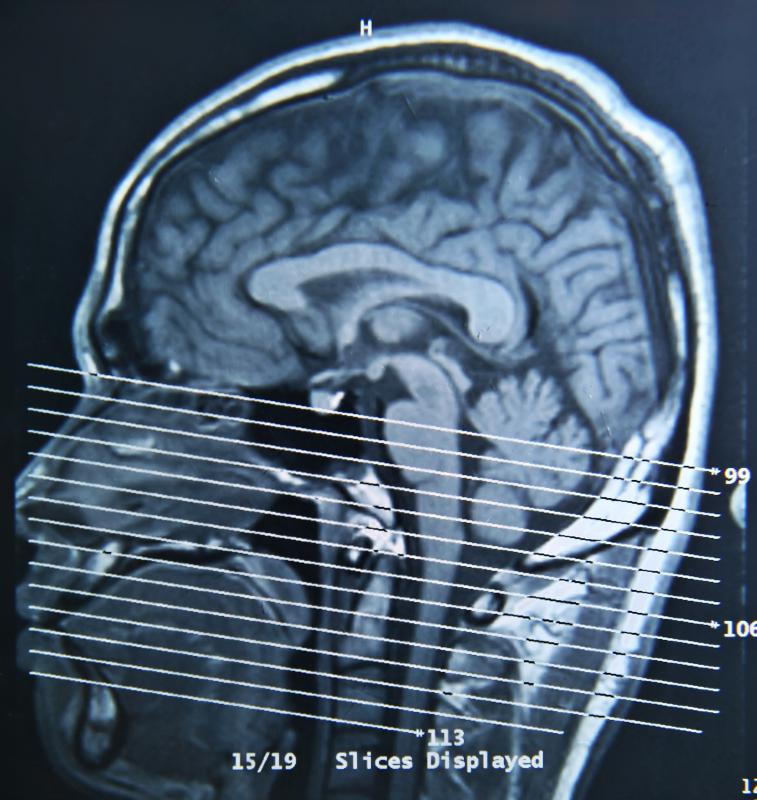At WiseGEEK, we're committed to delivering accurate, trustworthy information. Our expert-authored content is rigorously fact-checked and sourced from credible authorities. Discover how we uphold the highest standards in providing you with reliable knowledge.
What are Arachnoid Cysts?
Arachnoid cysts are fluid-filled sacs located around the brain or spinal cord in an area called the arachnoid membrane. These abnormalities are divided into two categories, dependent upon the cause: primary and secondary arachnoid cysts. Symptoms from arachnoid cysts may be general or progressive. Treatment may or may not be recommended.
Arachnoid cysts develop in an area underneath the arachnoid membrane, which covers the brain and spinal cord. The sacs may grow between the arachnoid membrane and either the brain or the spinal cord, although cysts around the temporal lobe of the brain are more common. A typical cyst is composed of collagen and arachnoidal cells. For unknown reasons, the conditions is more likely to develop in men than women. Detection of arachnoid cysts usually results from a brain scan.

The causes of an arachnoid cyst vary, but typically result from either a birth defect or a brain injury. Primary cysts comprise the former type, and they begin to arise during embryo development in the initial weeks of a pregnancy. A tearing of the arachnoid membrane typically causes this type of cyst. Secondary cysts, on the other hand, arise from some type of trauma to the brain, such as direct blows, brain tumors, or surgery complications.

Headaches, nausea, vertigo, seizures, and hearing or sight problems can persist as symptoms of arachnoid cysts, especially if the cyst is located around the brain. If a membrane defect softens cerebral tissue, porencephaly results. Cyst leakage can build dangerous pressure within the brain area as well. Some researchers believe arachnoid cyst syndrome may develop in more severe cases affecting the temporal lobes. The syndrome is characterized by cognitive, emotional, and behavioral problems that progress through adulthood.

Manifestation of symptoms can occur in several other areas of the body. If the cyst compresses the spinal cord via syringomyelia, long-term chronic symptoms may include pain, numbness, and tingling in the back, legs, or arms. These effects are due to an inflammation of the arachnoid membrane called arachnoiditis. An acoustic neuroma may develop on the nerve that runs to the ear, thus impacting hearing. The condition may also hinder the pituitary gland, leading to empty sella syndrome or panhypopituitarism that will adversely affect endocrine system functions.

Treatment options generally come in three varieties. A small cyst that causes no symptoms may simply be left untreated. Drainage of the cerebrospinal fluid may alleviate symptoms in some cases. Advances in technology have also introduced minor surgery as an option, given the cyst is in a reachable and safe location.
AS FEATURED ON:
AS FEATURED ON:
















Discuss this Article
Post your comments